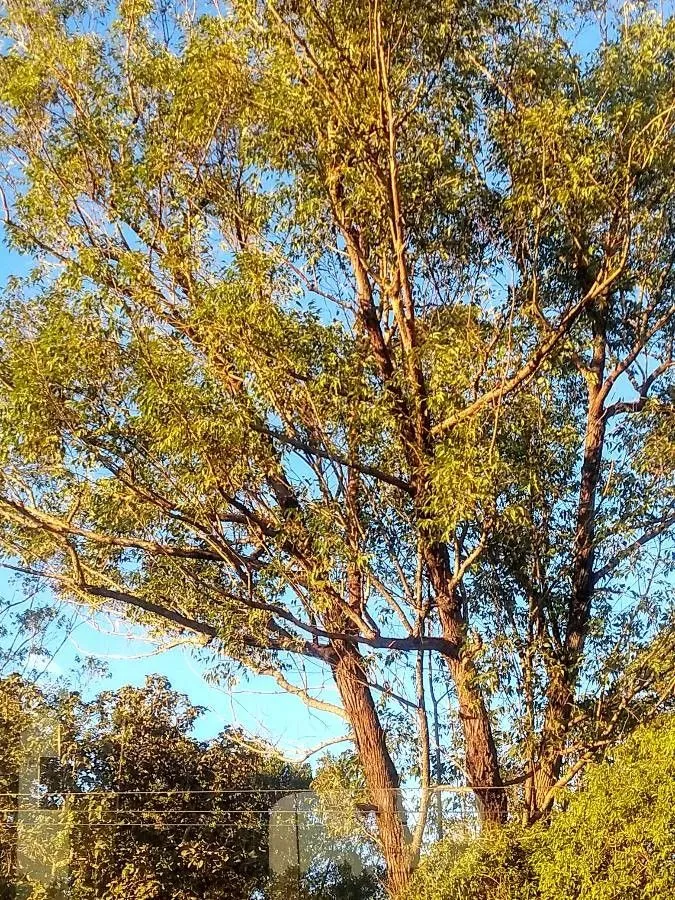
Author: F.Muell.
Bibliography: J. Proc. Linn. Soc., Bot. 3: 87 (1858)
Year: 1858
Status: accepted
Rank: species
Genus: Eucalyptus
Vegetable: False
Observations: E. Australia
The Narrowleaf red ironbark, scientifically known as Eucalyptus crebra, is a noteworthy species within the Myrtaceae family, indigenous to Eastern Australia. First described by F. Muell. in the Journal of the Proceedings of the Linnean Society, Botany in 1858, Eucalyptus crebra has since garnered attention for its distinct characteristics and ecological significance.
Characterized by its slender leaves, the Narrowleaf red ironbark thrives in a variety of soils and climates, predominantly found across the eastern regions of Australia. The tree is recognized for its resilience and adaptability, often standing tall amidst both open woodlands and more densely forested areas. The bark of the Eucalyptus crebra is a dark, deeply furrowed ironbark that provides the tree with its common name and encases the trunk with a robust, protective layer. This feature not only contributes to its hardiness but also imparts a stunning visual appeal that sets it apart from other eucalyptus species.
The leaves of Eucalyptus crebra are notably narrow and elongated, aligning with its name, and possess a greyish-green hue. These leaves play a crucial role in the tree’s survival, adept at conserving water in the typically arid Australian landscape. Furthermore, the Narrowleaf red ironbark produces small, white flowers that bloom in clusters, attracting a myriad of pollinators and contributing to the biodiversity of its habitat.
Ecologically, Eucalyptus crebra forms an integral part of the regions it inhabits, providing shelter and food for various wildlife species. The tree’s wood is dense and durable, making it a valuable resource for timber and other wood products. Additionally, the Narrowleaf red ironbark’s ability to withstand harsh environmental conditions makes it an essential component in reforestation and land rehabilitation efforts.
In summary, Eucalyptus crebra, or the Narrowleaf red ironbark, is a distinguished species within the Myrtaceae family, celebrated for its enduring nature and ecological value. Its presence in Eastern Australia embodies the resilience and diversity of the region’s flora, playing a vital role in maintaining the health and stability of its ecosystems.
Eng: narrowleaf red ironbark, grey ironbark, ironbark, ironbark-tree, narrow-leaf ironbark, narrow-leaf red ironbark, narrow-leaf-red-ironbark, narrow-leaved-ironbark, narrow-leaved-red-ironbark, red ironbark, white ironbark, narrow-leaved ironbark
Por: eucalipto
Swe: järnbarkseukalyptus
En: Narrowleaf red ironbark, Grey ironbark, Ironbark, Ironbark-tree, Narrow-leaf ironbark, Narrow-leaf red ironbark, Narrow-leaf-red-ironbark, Narrow-leaved-ironbark, Narrow-leaved-red-ironbark, Red ironbark, White ironbark, Narrow-leaved Ironbark
Pt: Eucalipto
Sv: Järnbarkseukalyptus
Taken May 18, 2020 by JP Corrêa Carvalho (cc-by-sa)
Growth habit: Tree
Family: Myrtaceae Author: (F.Muell.) K.D.Hill & L.A.S.Johnson Bibliography: Telopea 6: 402 (1995) Year: 1995 Status:…
Family: Rubiaceae Author: Pierre ex A.Froehner Bibliography: Notizbl. Bot. Gart. Berlin-Dahlem 1: 237 (1897) Year:…
Family: Sapindaceae Author: Koidz. Bibliography: J. Coll. Sci. Imp. Univ. Tokyo 32(1): 38 (1911) Year:…
Family: Asteraceae Author: A.Gray Bibliography: Pacif. Railr. Rep.: 107 (1857) Year: 1857 Status: accepted Rank:…
Family: Fabaceae Author: Medik. Bibliography: Vorles. Churpfälz. Phys.-Ökon. Ges. 2: 398 (1787) Year: 1787 Status:…
Family: Aspleniaceae Author: (Cav.) Alston Bibliography: Bull. Misc. Inform. Kew 1932: 309 (1932) Year: 1932…